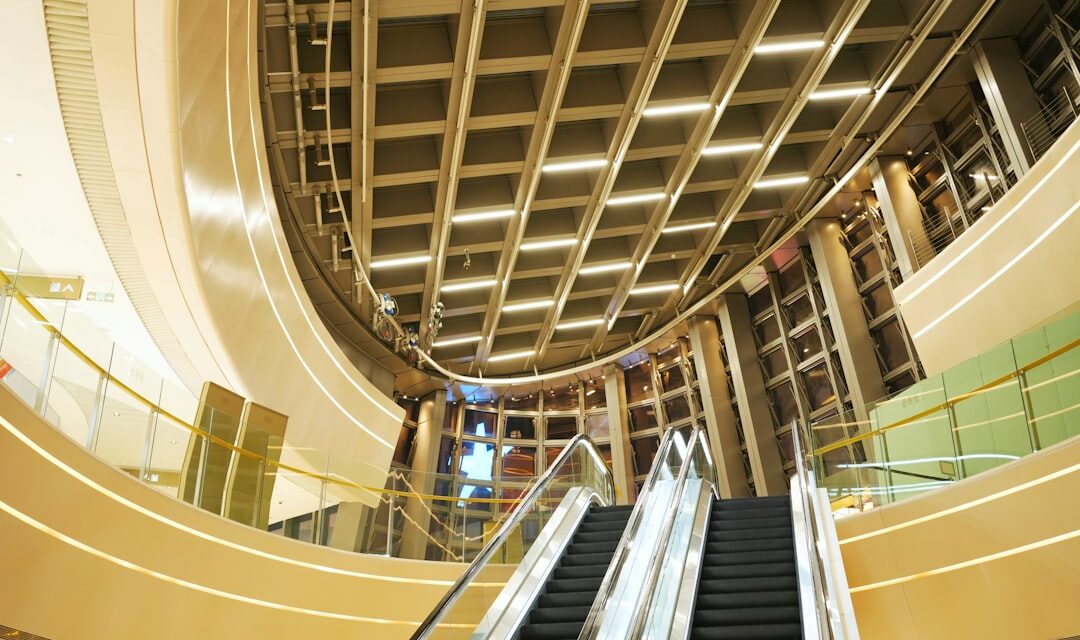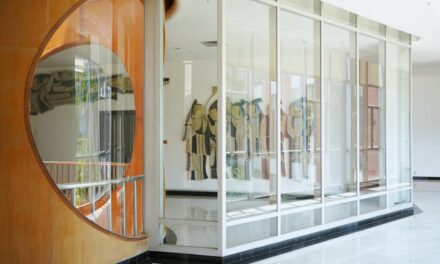The Tate Britain, located on Millbank in London, is one of the foremost art galleries in the United Kingdom, renowned for its extensive collection of British art. Its origins can be traced back to 1897 when it was established as the National Gallery of British Art. The gallery was founded by Sir Henry Tate, a sugar magnate who generously donated his collection of British paintings to the nation.
The initial aim was to create a dedicated space for British art, which had previously been somewhat overshadowed by the more prominent European works housed in the National Gallery. Over the years, the Tate Britain has undergone significant transformations. In 1917, it was officially renamed Tate Gallery, and its mission expanded to include modern and contemporary art.
This shift reflected a growing recognition of the importance of British artists in the broader context of art history. The gallery continued to evolve, and in 2000, it was rebranded as Tate Britain to distinguish it from its sister institutions, Tate Modern, Tate Liverpool, and Tate St Ives. This rebranding marked a new chapter in its history, focusing on the rich tapestry of British art from the 16th century to the present day.
Summary
- Tate Britain was established in 1897 as the National Gallery of British Art and was later renamed in honor of its founder, Sir Henry Tate.
- Collection highlights include works by J.M.W. Turner, John Constable, and William Blake, as well as a comprehensive collection of British art from 1500 to the present day.
- The Tate Britain building is a striking example of Victorian architecture, with a grand central dome and classical portico.
- Temporary exhibitions and events at the Tate Britain showcase contemporary British artists and offer a diverse range of cultural experiences.
- Visitor information includes opening hours, ticket prices, and location details, as well as information on guided tours and audio guides.
Collection highlights at the Tate Britain
Technical Brilliance and Emotional Resonance
This painting is celebrated not only for its technical brilliance but also for its emotional resonance, symbolising the end of an era in British maritime history. Turner’s innovative use of light and colour has influenced countless artists and continues to be a focal point for visitors.
Pre-Raphaelite Romanticism
Another significant work is “The Lady of Shalott” by John William Waterhouse, which draws inspiration from Alfred Lord Tennyson’s poem of the same name. This painting exemplifies the Pre-Raphaelite movement’s fascination with romanticism and medieval themes. The ethereal quality of Waterhouse’s work, combined with its intricate detail, invites viewers into a world of myth and legend.
A Diverse Roster of British Artists
Additionally, the gallery houses an impressive collection of works by artists such as Francis Bacon, Henry Moore, and David Hockney, each contributing to the narrative of British art through their unique perspectives and styles.
Architecture of the Tate Britain building
The architecture of Tate Britain is as compelling as the artworks it houses. The building itself was designed by architect Sidney R. J. Smith and opened to the public in 1897. Its grand façade features a classical style with a portico supported by Corinthian columns, evoking a sense of permanence and reverence befitting a national gallery. The imposing structure is constructed from Portland stone, which gives it a distinctive light hue that stands out against the backdrop of the River Thames. In 2000, a significant extension was added to the original building, designed by architect Mark Walford. This modern addition complements the historical aspects of Tate Britain while providing new exhibition spaces that enhance visitor experience. The juxtaposition of old and new architecture creates a dialogue between different eras of design, reflecting the evolution of artistic expression over time. The interior spaces are thoughtfully arranged to facilitate both large-scale exhibitions and intimate displays, allowing for a diverse range of artistic presentations.
Temporary exhibitions and events at the Tate Britain
Tate Britain is renowned for its dynamic temporary exhibitions that showcase both historical and contemporary artists. These exhibitions often delve into specific themes or movements within British art, providing fresh insights into familiar works while introducing lesser-known artists to a wider audience. For instance, exhibitions such as “Queer British Art” have explored the intersection of sexuality and artistic expression, highlighting how personal identity shapes creative output.
In addition to visual art exhibitions, Tate Britain hosts a variety of events throughout the year, including talks, workshops, and performances that engage visitors in different ways. These events often feature prominent artists and scholars who share their insights and experiences, fostering a deeper understanding of the artworks on display. The gallery’s commitment to accessibility means that many events are designed to cater to diverse audiences, ensuring that everyone can participate in the vibrant cultural dialogue that Tate Britain promotes.
Visitor information for the Tate Britain
Visiting Tate Britain is an enriching experience for art enthusiasts and casual visitors alike. The gallery is conveniently located near public transport links, including Pimlico Underground Station and various bus routes that make it easily accessible from different parts of London. Admission to the permanent collection is free, allowing visitors to explore its extensive offerings without financial barriers.
However, some temporary exhibitions may require a ticket purchase. The gallery’s opening hours are typically from 10:00 AM to 6:00 PM daily, with extended hours during special exhibitions or events. Visitors are encouraged to check the official website for any updates regarding opening times or special closures.
Additionally, Tate Britain provides various facilities to enhance visitor experience, including cloakrooms, rest areas, and information desks staffed by knowledgeable personnel who can assist with inquiries about exhibitions or events.
Education and learning opportunities at the Tate Britain
Engaging Schools and Young Minds
The gallery offers a range of programmes designed to engage schools, families, and adults in meaningful ways. For school groups, bespoke workshops are available that align with national curriculum objectives while encouraging creativity and critical thinking through hands-on activities related to the collection.
Deepening Understanding for Adults
For adults seeking to deepen their understanding of art history or specific artists, Tate Britain provides lectures and courses led by experts in the field. These educational initiatives often include guided tours that explore particular themes or movements within British art, allowing participants to engage directly with artworks while gaining insights into their historical context.
Family-Friendly Fun
Furthermore, family-friendly activities such as art trails and interactive workshops ensure that younger visitors can enjoy a fun and educational experience during their visit.
Accessibility at the Tate Britain
Tate Britain is committed to ensuring that all visitors can enjoy its facilities and exhibitions without barriers. The gallery has made significant strides in enhancing accessibility for individuals with disabilities. Wheelchair access is available throughout the building, including entrances, exhibition spaces, and restrooms.
Additionally, tactile tours are offered for visually impaired visitors, allowing them to engage with artworks through touch and description. The gallery also provides resources such as audio guides that cater to various needs, including those with hearing impairments or learning disabilities. These guides offer detailed information about selected works in an accessible format.
Furthermore, staff members are trained to assist visitors with specific requirements, ensuring that everyone feels welcome and supported during their time at Tate Britain.
Dining and shopping options at the Tate Britain
A visit to Tate Britain is not complete without exploring its dining and shopping options. The gallery features a café that offers a selection of seasonal dishes made from locally sourced ingredients. Visitors can enjoy light meals or refreshments while taking in views of the surrounding gardens and river Thames.
The café’s relaxed atmosphere makes it an ideal spot for a break after exploring the galleries. In addition to dining facilities, Tate Britain boasts a well-stocked shop that offers an array of art-related merchandise. From books on British art history to unique gifts inspired by current exhibitions, there is something for everyone.
The shop also features prints and reproductions of famous works from the collection, allowing visitors to take home a piece of their experience at Tate Britain. This combination of dining and shopping enhances the overall visitor experience, making it possible to linger longer in this cultural haven while enjoying both sustenance and souvenirs.
If you are interested in learning more about the history and significance of conceptual art, I recommend checking out this article. Conceptual art is a fascinating movement that challenges traditional notions of art and pushes boundaries in terms of creativity and expression. Understanding the principles of conceptual art can provide valuable insight into the works on display at the Tate Britain in London, UK.
FAQs
What is the Tate Britain?
The Tate Britain is an art museum located in London, UK. It is part of the Tate network of galleries, which also includes the Tate Modern, Tate Liverpool, and Tate St Ives.
What is the history of the Tate Britain?
The Tate Britain was originally established in 1897 as the National Gallery of British Art. It was later renamed the Tate Gallery in honor of its founder, Sir Henry Tate. In 2000, it was renamed the Tate Britain to distinguish it from the newly opened Tate Modern.
What kind of art is displayed at the Tate Britain?
The Tate Britain is known for its collection of British art from the 16th century to the present day. It includes works by renowned artists such as J.M.W. Turner, John Constable, William Blake, and Francis Bacon.
What are the highlights of the Tate Britain’s collection?
Some of the highlights of the Tate Britain’s collection include J.M.W. Turner’s iconic paintings, John Constable’s landscapes, and the works of the Pre-Raphaelite Brotherhood. The museum also has a significant collection of British sculpture.
Are there any special exhibitions at the Tate Britain?
The Tate Britain regularly hosts special exhibitions showcasing specific artists, movements, or themes within British art. These exhibitions often feature loans from other institutions and private collections.
Is there an admission fee to visit the Tate Britain?
While general admission to the Tate Britain is free, there may be a charge for special exhibitions. Visitors are encouraged to check the museum’s website for current admission information.
What are the opening hours of the Tate Britain?
The Tate Britain is typically open daily from 10:00 am to 6:00 pm, with extended hours on Fridays and Saturdays. However, visitors are advised to check the museum’s website for the most up-to-date opening hours.




